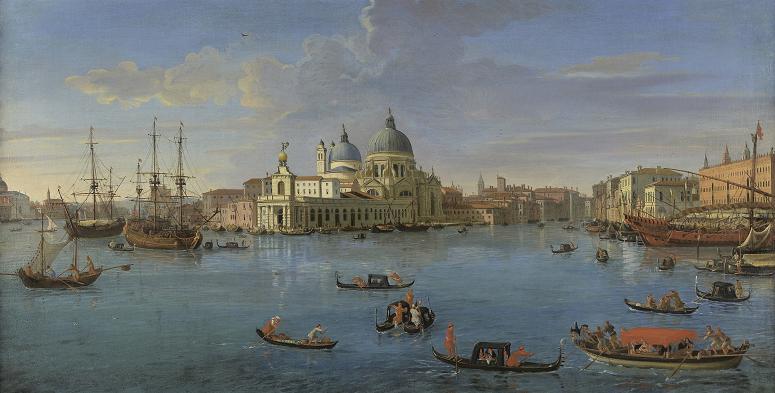
Veduta. A veduta is a highly detailed, usually large-scale painting or, more often, print of a cityscape or some other vista.
The painters of vedute are referred to as vedutisti. This genre of landscape originated in Flanders, where artists such as Paul Bril painted vedute as early as the 16th century.
In the 17th century, Dutch painters made a specialty of detailed and accurate recognizable city and landscapes that appealed to the sense of local pride of the wealthy Dutch middle class. An archetypal example is Johannes Vermeer's View of Delft.
The Ghent architect, draughtsman and engraver Lieven Cruyl contributed to the development of the vedute during his residence in Rome in the late 17th century. Cruyl's drawings reproduce the topographical aspects of the urban landscape.
As the itinerary of the Grand Tour became somewhat standardized, vedute of familiar scenes like the Roman Forum or the Grand Canal recalled early ventures to the Continent for aristocratic Englishmen. By the mid-18th century, Venice became renowned as the centre of the vedutisti. The genre's greatest practitioners belonged to the Canal and Guardi families of Venice. Some of them went to work as painters in major capitals of Europe, e.g., Canaletto in London and his nephew Bernardo Bellotto in Dresden and Warsaw. In other parts of 18th-century Italy, idiosyncratic varieties of the genre evolved. Giovanni Paolo Pann
The painters of vedute are referred to as vedutisti. This genre of landscape originated in Flanders, where artists such as Paul Bril painted vedute as early as the 16th century.
In the 17th century, Dutch painters made a specialty of detailed and accurate recognizable city and landscapes that appealed to the sense of local pride of the wealthy Dutch middle class. An archetypal example is Johannes Vermeer's View of Delft.
The Ghent architect, draughtsman and engraver Lieven Cruyl contributed to the development of the vedute during his residence in Rome in the late 17th century. Cruyl's drawings reproduce the topographical aspects of the urban landscape.
As the itinerary of the Grand Tour became somewhat standardized, vedute of familiar scenes like the Roman Forum or the Grand Canal recalled early ventures to the Continent for aristocratic Englishmen. By the mid-18th century, Venice became renowned as the centre of the vedutisti. The genre's greatest practitioners belonged to the Canal and Guardi families of Venice. Some of them went to work as painters in major capitals of Europe, e.g., Canaletto in London and his nephew Bernardo Bellotto in Dresden and Warsaw. In other parts of 18th-century Italy, idiosyncratic varieties of the genre evolved. Giovanni Paolo Pann
Wikipedia ...